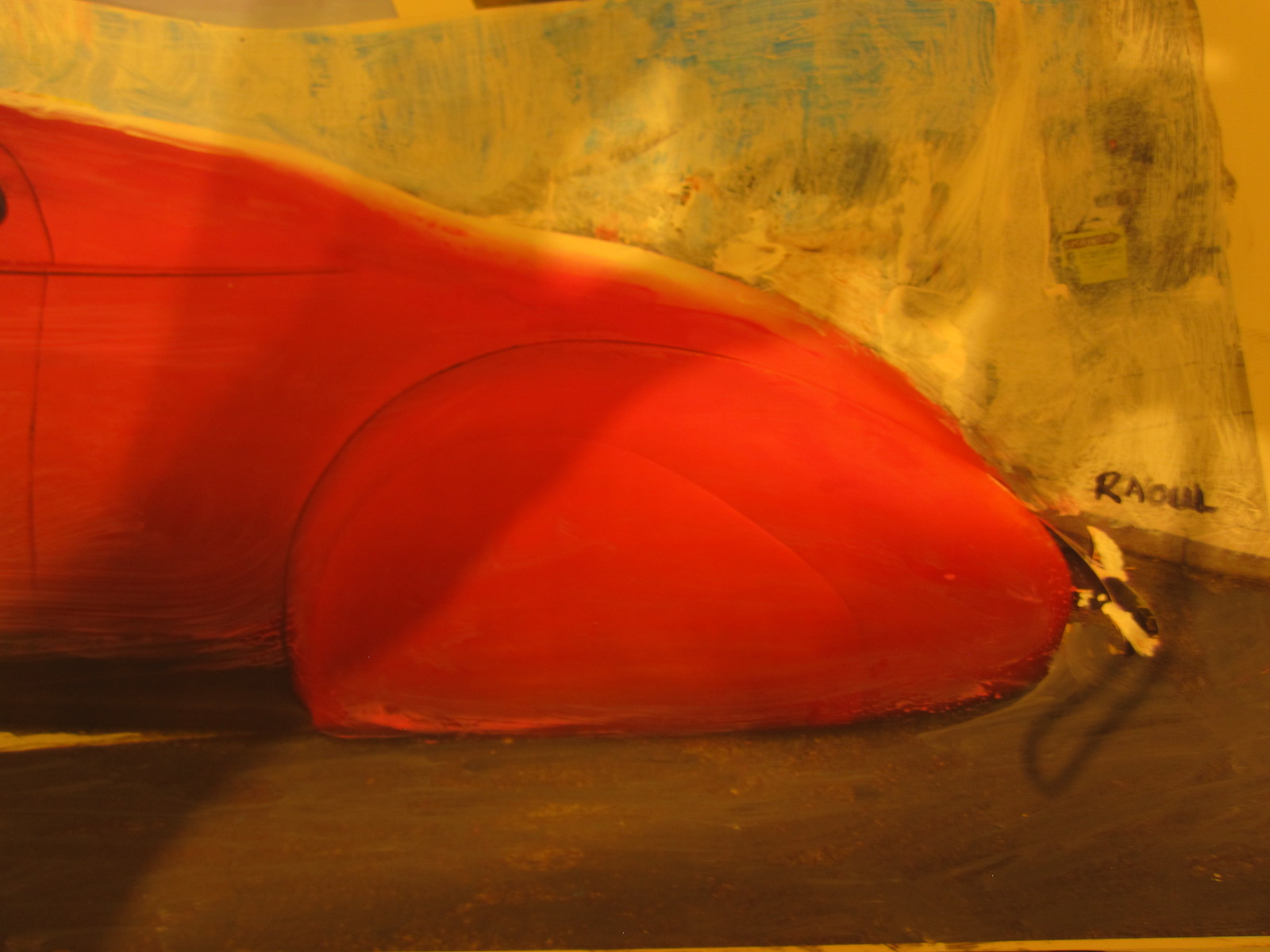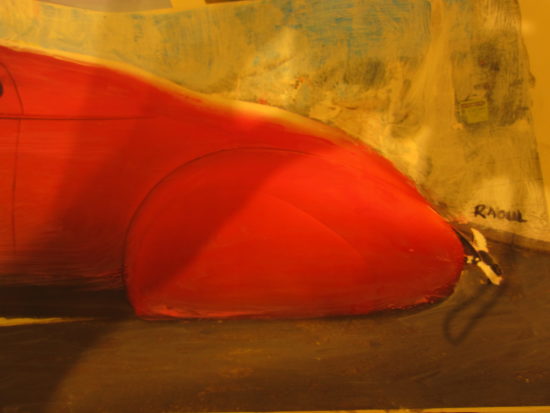by Wallace Wyss –
Lee came across The Zone purely by accident. He was over at Downetowne Books in Riverside, a little quaint vintage bookstore hidden in an alley, when he caught the ’49 Ford heading west toward the hotel at the end of the block.
When he emerged from the alley he saw another old car, this one an old Lincoln convertible, a Premiere. He couldn’t figure out what year but suspected an extra 2 or 3 feet had been added to the back–I mean, seriously, Detroit never made cars that long, did they?
He grabbed his camera out of his car and headed over there–a Marriott Inn–with his sometimes photographer, Church (short for Churchill) who always had a long lens Canon hanging around his neck.
If it was a car show, some things were missing like the sign. Where were the signs and the music? He suspected those would be at the dinner the group planned that night. The dinner would have to have vintage music and lots of signs and colored spotlights and tinsel, I mean that’s what the ’50s were all about, right?
He and Church wandered the four level parking garage. They counted over 40 cars in the group. There was only one fully restored car, a gleaming black Lincoln convertible but everything else they saw was still on the way to being restored or maybe leaving it unpainted, missing chrome, and making do with a Mexican serape as a makeshift seat cover. It seemed as if the owners were satisfied. This was as far as they were going to go. They had reached some invisible limit.
The people with the cars were quiet, guys wearing black t-shirts and jeans, some with rolled-up cuffs. Some of the girls in scoop-neck blouses, heels, and ’50s poodle shirts and hairdos that looked out of the ’40s or early ’50s. There were only a couple teenage girls but being guarded by matronly types who appeared squeezed into period clothing.
He and Church circulated separately and then stopped once between garage floors to compare notes.
“What d’ya make of it, Church?”
“I dunno,” said Church, feeding a new battery into his camera.” “there is no there there.”
Lee thought about that for a moment. He remembered the same phrase being used by a famous poet he has met once, after he asked him what he thought of his adopted State of Nebraska. It was like all the people who had come to this show, which would end with a dinner, were happy with what they had–there was no gathering around one guy’s car to see his whoopy-do big block blown engine, or his solid state LED screen radio. No, these guys seemed content with near stock or the way it would been done by hot-rodders, in, say, 1955 or at a stretch, maybe 1965.
The women all were talking among themselves while the men gathered in groups of two or three to look at each car. Finally Lee heard a song playing from a car that had a 45-rom record player, a scratchy record from the ’50s, one he recognized it as Clyde McPhatter’s hit with The Drifters, “Honey Love.” I mean who had he ever known that played Clyde McPhatter?
He had to take a break. When he walked out on the main street in front of the hotel, there were modern cars whizzing past and he caught snatches of modern music. But when he glanced back over his shoulder, back into the dim reaches of the garage, he saw a quieter, more languid place, one exuding a whole different ambiance. Almost spooky.
He saw Church emerging from the garage and signaled their new direction by tilting his head toward downtown. “I had to get outa there,” he said.
Church grinned. “I feel the same damn way.”
They sat in chairs at a table outside Molinos, a trendy coffee shop across from the famous old Mission Inn.
Lee looked at the modern cars rushing past, electric cars and hydrogen cars and natural gas cars. And girls walking past with Spandex this and Spandex that which, using modern science, tucked volumes of flesh into pre-calculated shapes representing voluptuous breasts and buttocks. He sipped his coffee and thought about what they had just seen at the Hotel.
He chuckled to himself. He finally got it. There had been something alluring about what they were doing but it took him a solid half hour of mental comparisons with a 100 other car events he’d been to with Church in the last few years to figure out their schtick. This show they had just been to wasn’t just about the cars. Or the clothes. Or the music. It was, however, to his way of thinking, to temporarily create a thought space, a zone, for want of a better word.
A zone relentlessly re-creating a specific era, where for a few hours, the club members could all go back to a time and space worth respecting. A time when you fixed your car with pliers and wrenches and a screwdriver for Chrissake. In this group there was no pressure to constantly up-date your ride, no pressure to always get the latest technology–the latest mag wheels and low section-height tires. Electronic tom-foolery and what-not. No, whether it was clothes or cars or music, for this group, it was pick a year you won’t go beyond, draw that firm line in the sand, and don’t go beyond it for the good of the group. And to hell with anything anyone who was trying to sell you something made past that date.
Forget the future, with its glittering promises, like a bejeweled chanteuse who looks oh-so-good in a nightclub’s spotlight’s glare but like a painted charlatan in the cold light of day. The message here was relish the past, honor what’s true– what the rodders created. Out on the dry lakes, and on a thousand Woodward Avenues coast-to-coast.
And you know what? Lee looked over at Church to see if he’d come to the same conclusion. But Church was busy, photographing a modern car driving past.
Lee shook his head. Church didn’t get it….more’s the pity.
Let us know what you think in the Comments.
THE AUTHOR: Wallace Wyss is the author of eighteen car histories. He is working on a book of short stories. He can be heard weekly on Autotalk, a show broadcast weekly from KUCR FM Riverside.





Speak Your Mind